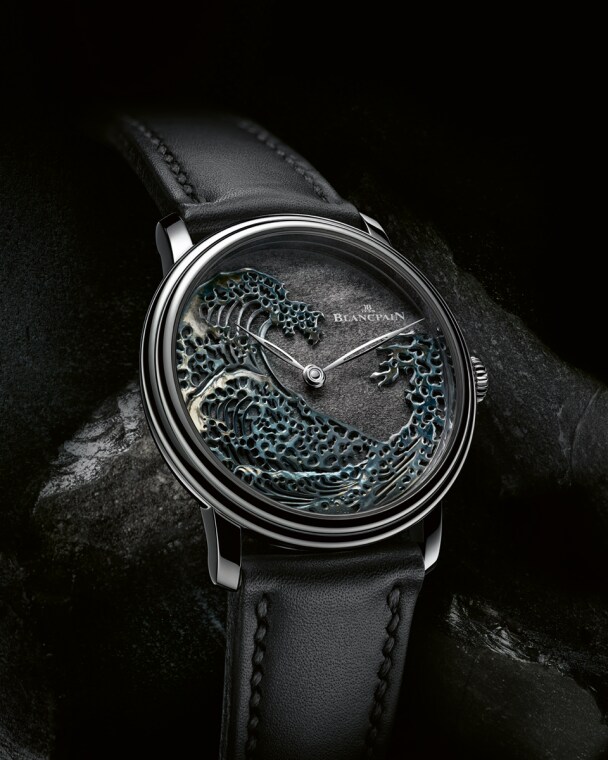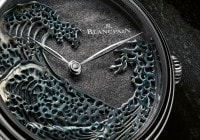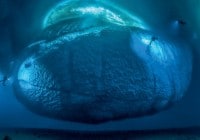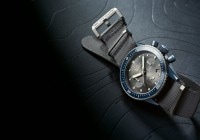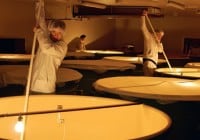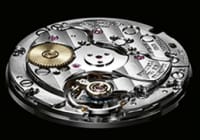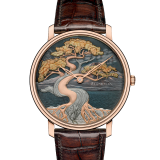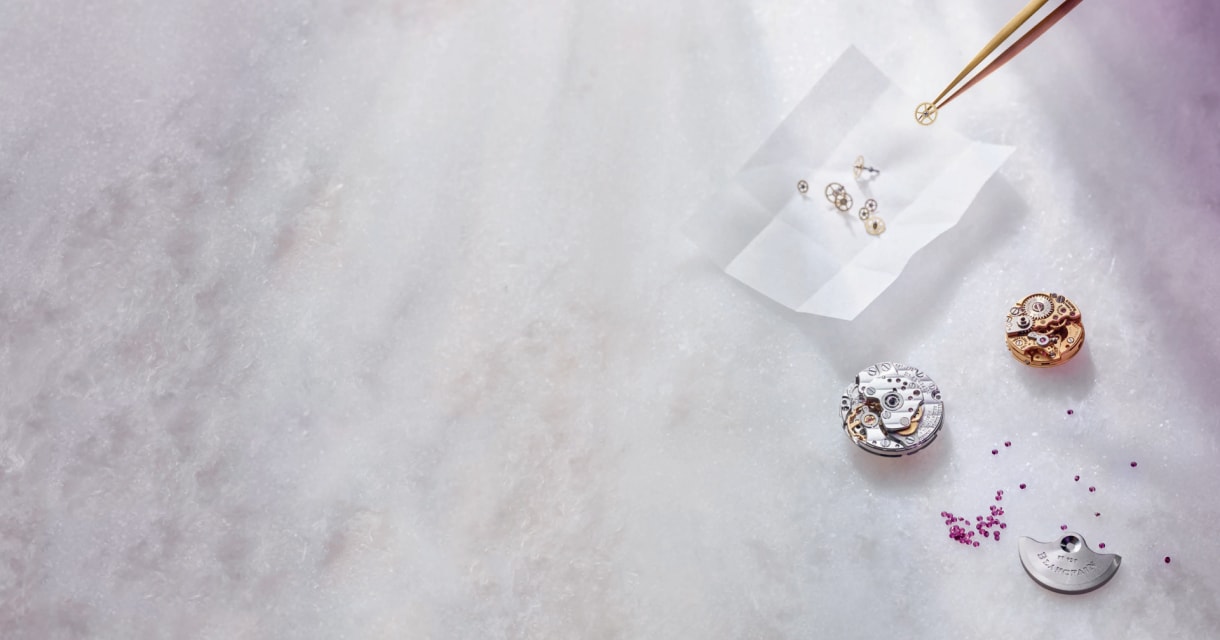
Search in Issues
Chapters
Chapter 1
Métiers d’art THE GREAT WAVE
The power of the sea comes to life on a dial.
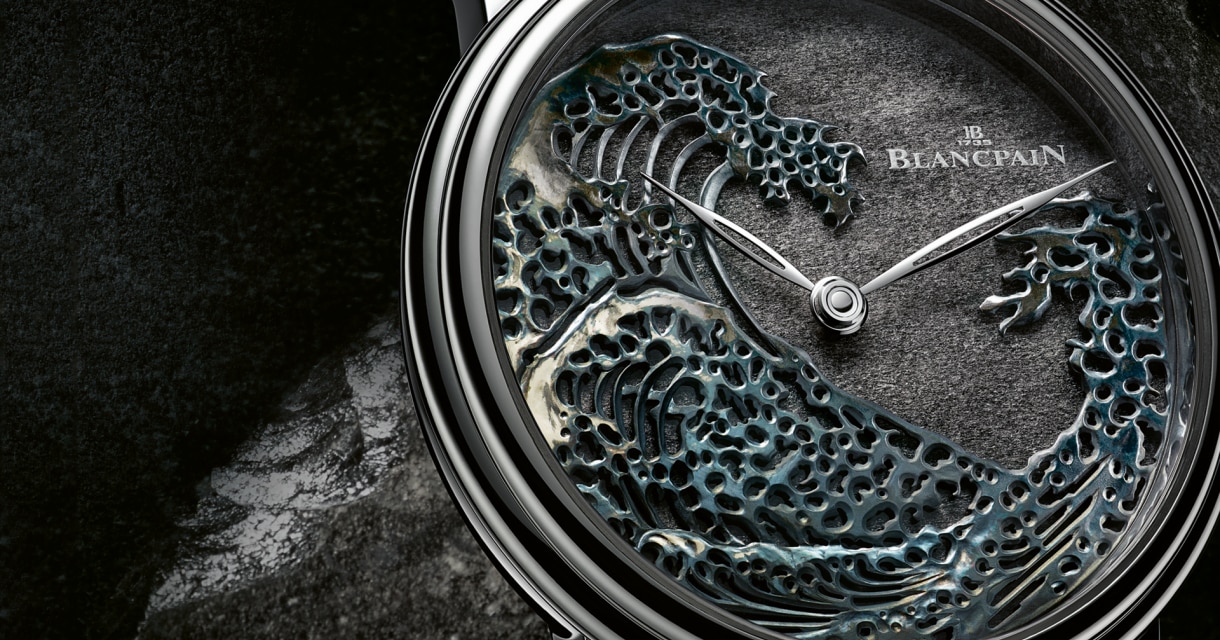
Hokusai’s iconic image of THE GREAT WAVE is the inspiration for Blancpain’s new métiers d’art piece.
Can there be a more challenging tableau for an artist than the microdimensions of a timepiece’s dial? After all, freeing themselves from even the dimensions of conventional large paintings or sculptures, many modernists take command of an entire room to express themselves. Christo’s medium was the full length of the Pont Neuf in Paris and miles of countryside in California for his “Running Fence”. No similar space liberties when it comes to bestowing art upon watch dials or movement components; the dimensions and boundaries are miniscule and tightly circumscribed. Working in small scale or no, in Blancpain’s métiers d’art studio the artisans see no boundaries in the techniques and motifs that they create. At the benches in the Le Brassus farmhouse that has been in the Blancpain family since 1860 and is home to both the métiers d’art studio and the complicated watch workshops, artistic engraving, enameling in multiple forms (miniature painting, cloisonné and champlevé), damascening, shakudō and more, all take full flight.
The latest creation is The Great Wave, inspired by Hokusai’s 1830 woodblock print “The Great Wave off Kanagawa”. There is perhaps no image in Japanese art more iconic than the Great Wave. Hokusai famously said, prior to the age of 70, he produced no pictures of “any merit”. It took all that time for him to learn about the “true nature of things”. What a standard he set for himself; he mused that it would take him to the age of 100 before he would be able to “make some real wonders”! Don’t mention that to the legions who have marveled at his life’s work and, in particular, the Great Wave, even if it had been created well before age 100. Few works of art have communicated as forcefully the power and fury of sea as is expressed in the Great Wave. The 5,000 prints made from the original woodblocks are now coveted treasures and have inspired many derivative works that have followed. French writer and art critic Edmond de Goncourt offered the following observation:
“The drawing of the wave is a deification of the sea made by a painter who lived in religious terror of the overwhelming ocean completely surrounding his country; he is impressed by the sudden fury of the ocean’s leap toward the sky...”
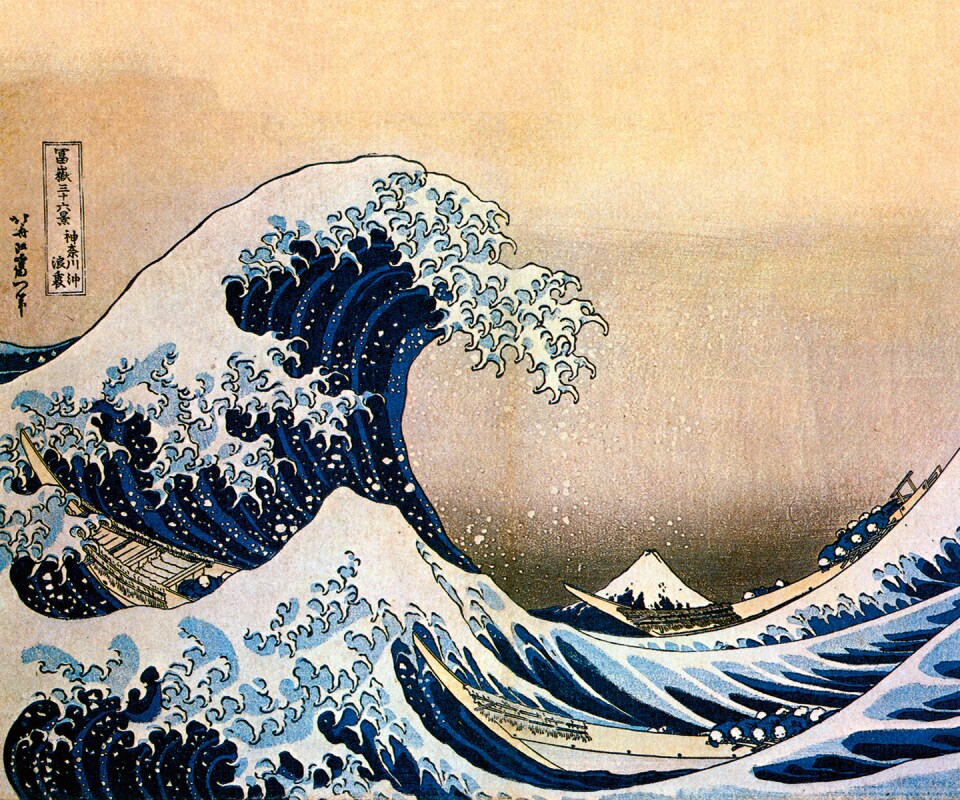

A three-dimensional WHITE GOLD HAND CARVING captures the dynamism of the sea.
Capturing the force and dynamism of the wave in but a few millimeters of space on the face of a watch was an extraordinary challenge for Christophe Bernardot in Blancpain’s métiers d’art studio. More than that, it was an entirely self-imposed challenge. There are two unshakeable philosophical guidelines that shape the projects in the Le Brassus studio. First, completely at odds with business orthodoxy, the artistic themes and projects originate with Bernardot and his team, rather than with an edict or direction from management. Of course, eventually the ideas are presented to Blancpain’s CEO, Marc A. Hayek, for approval, but that takes nothing away from the free thinking and unbounded liberty to generate ideas that has taken root in Le Brassus. Bernardot’s second creative imperative is to disregard the artistic efforts of other watch houses and equally to avoid recreating motifs from the past reposing in watch museums. Where is the creativity in a watch dial that draws from a timepiece of 200 years ago?
Unbound from both management directions and dusty watch history, Bernardot gave his imagination free rein. Having explored both Chinese and Indian themes in recent years he wanted to find a new direction. What came to mind was the intersection between Japanese culture and Blancpain’s devotion to environmental protection of the seas as expressed with its Ocean Commitment. It did not take him long to connect those thoughts to Hokusai’s iconic depiction of the sea.
But how to express the dynamism of the sea on the face of a watch? Bernardot wanted to capture both power and motion and, at the same time, frame the round dial with an image. Should it be an enamel painting? An engraving? He wanted a more forceful depiction which led him to create a three-dimensional white gold engraving of a wave. For still greater visual depth, he endowed it with a patina using the Japanese shakudō techniques which he pioneered at Blancpain with the award-winning Ganesh dials. With multiple treatments of the finely hand carved image, coupled with delicate polishing of some of the areas, Bernardot was able to bring shadow, light and energy to his wave.
Each Great Wave timepiece will be UNIQUE.
The complex wave was done in the form of what watchmakers call an applique, an element that would be attached to the surface of the dial. Finding the right surface material became the second part of his quest. Bernardot wanted to showcase the wave, but not upstage it. Bright or overly smooth finishes risked destroying the spirit of the piece. Examining a wide range of materials, he settled on a stone never before used as the background for a watch dial, Mexican obsidian. Its gray moody color, infused with subtle, extremely fine bright grains, both highlighted the wave and built the atmosphere of a storm. With both the color and texture he wanted, Bernardot had next to confront the challenge of attaching the hand carved wave, which meant drilling fine holes through the stone in order to accept miniscule feet on the backside of the applique. Extreme delicacy of technique was required to avoid cracking or shattering the obsidian stone.
As has been the case with creations from his studio, The Great Wave timepiece that was presented at Basel is a unique piece. There will be others, each one unique with variations in form and color. Indeed, collectors have already begun making requests for bespoke versions adding other elements to the tableau such as small fishermen’s boats and Mount Fuji. Every Great Wave timepiece will be a limited edition of one.
The Great Wave watch opens a new chapter in Blancpain’s métiers d’art collection. Prior to this debut, Blancpain has used its caliber 15B pocket watch movement as the base for these special pieces. For The Great Wave, Blancpain turned to a new variation of the 13R0 movement that debuted in 2006 and which launched Blancpain’s creation of 35 new movements that now power almost all of the collections. Named the 13R3A, the Great Wave movement differs from the 13R0 in its positioning of the power reserve indicator on the back of the watch. It shares, however, the extraordinary eight day power reserve and three main spring barrel architecture of its predecessor. Thus, not only does The Great Wave blaze a new path with its original combination of theme, materials and technique on the dial, it sets itself apart from métiers d’art efforts elsewhere with its technically advanced movement.
